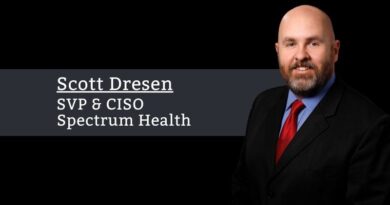Recent Trends and Roles of Emerging Technologies in Revenue Cycle Operations
By Sheldon A. Pink, VP of Revenue Cycle, Luminis Health
The healthcare revenue cycle technology space has significantly evolved over the past five years. Before the pandemic, there were many companies striving for automation, integration, reporting, and workflow efficiency to support revenue cycle operations. The last two years have forced the advancement of technology in all areas of the revenue cycle due to retrenchment. We have seen significant enhancements in the gamut of the revenue cycle. Pre services, patient access, clinical documentation, and patient financial services; just to mention a few.
Additionally, there were several advancements in clinical delivery. The growth of telemedicine is a prime example of our modernization. Healthcare has historically been behind the technology curve and revenue cycle innovation is the key to outside investments in healthcare. We are also experiencing non-traditional businesses merging into the healthcare industry because of the technological advancements fostered over the past several years. Nonetheless, the improvements in healthcare technology’s structure will improve our efficacy. At Luminis health, we identified the need to transform; remaining stagnant would be futile. I was tasked with developing and executing the plan to move the revenue cycle in the right direction. The process included evaluating existing systems, workflow challenges, and partnering with IT to focus on specific opportunities for improvement. We also needed to assess the full capabilities of our EHR, as it also had recent technological improvements.
Technology will continue to drive the revenue cycle industry due to the continuous newly identified needs of our patients, organizational financial pressures, and state and federal regulation.
The authorization process has always been a quagmire for hospitals. We are faced with coordinating efforts between the physician’s office, registration, patients, operating room, and the insurance company. In the past, the process was managed by several phone calls to each of the stakeholders with instructions on how to complete their part of the process. Technology is now available that augments these activities and limits the number of interactions required to financially secure an account. Our organization has recently invested in this technology and is in the implementation process. We also explored self-registration. The pandemic has encouraged us to search for innovative ways to accurately register a patient with less staffing and accuracy.
The clinical documentation process has also emerged with new technologies focused on computer assisted physician documentation (CAPD), physician query responses, DRG reconciliation, and diagnosis identification. These enhancements will allow us to use less workforce to cover a broader base of patients. We identified several opportunities for technological enhancements within our PFS department. Due to the abundance of products in this area of the revenue cycle, our evaluation of PFS opportunities was limited to our organization’s ability to manage the different projects. We needed to correlate our technology ambitions to the organizational strategy. This would ensure alignment with all layers of the health system. The process allowed us to identify areas for immediate improvement and a long-term vision. The challenges we encountered are typical for organizations. There is always a longer vision and as a key decision-maker, you must always consider that dichotomy. Therefore, we had to partner with operational leaders, our EHR vendor, and the executive team; as these initiatives required investments. We decided to focus on key areas that allowed us to advance operations without altering the goals of the organization. We started with our claims process, and having the ability to bill secondary claims electronically was a significant lift for the organization.
We identified the need for automation. During the same period of revenue cycle technology advancement, we were also faced with the great resignation and were required to find operational efficiencies to manage the staffing shortfall. Denials prevention is one of our leading initiatives and we needed more insight into it to identify the areas of improvement. Therefore, we identified the need to improve our denial analytics and partnered with a firm to ensure we can affect changes in real-time, drive workflows, and use predictive analysis to support operational changes. Lastly, we invested in digital communications for patients. The industry identified the need for our patients to receive several different forms of communication. Healthcare needed to transform the way other industries have done in the past ten years.
Technology will continue to drive the revenue cycle industry due to the continuous newly identified needs of our patients, organizational financial pressures, and state and federal regulation. As leaders in our industry, we must clearly define the problem statement before committing to system enhancements that may not be warranted for our environment. Additionally, be mindful of the partners you select. There are many companies in the industry that do not have the vainglory of other companies but have great ideas that will serve you better as a partner. This is optimistic and risky; however, if you maintain your assiduity for #RCMExcellence, you will not fail. Your technology partner should be able to advance your operations without placing new roadblocks in your path. Our world will never be perfect, hence the reason for the revenue cycle management team. We are encouraged to be continuously innovative and disruptive; however, we need to understand the cost-benefit to ensure our stability. Our role is to understand our IT infrastructure, organizational readiness, and change management plan. The emergence of revenue cycle technologies is at the beginning of its journey. As our industry continues to revolutionize, new products and processes will drive innovation. The financial demands, patient preferences, regulations and payor challenges serve as a perpetual epidemic in our industry and will continue to drive technological innovation.



